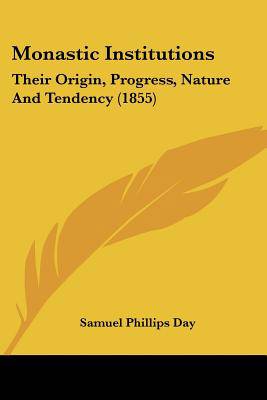
- Afhalen na 1 uur in een winkel met voorraad
- Gratis thuislevering in België vanaf € 30
- Ruim aanbod met 7 miljoen producten
- Afhalen na 1 uur in een winkel met voorraad
- Gratis thuislevering in België vanaf € 30
- Ruim aanbod met 7 miljoen producten
Zoeken
Monastic Institutions
Their Origin, Progress, Nature And Tendency (1855)
Samuel Phillips Day
Paperback | Engels
€ 43,45
+ 86 punten
Uitvoering
Omschrijving
Monastic Institutions: Their Origin, Progress, Nature And Tendency is a book written by Samuel Phillips Day in 1855. The book provides a comprehensive overview of monastic institutions, their origins, and their evolution over time. It explores the nature and purpose of monasticism, and how it has influenced society throughout history.The book is divided into several chapters, each of which focuses on a specific aspect of monasticism. The first chapter provides an introduction to the topic and discusses the origins of monasticism in the early Christian church. The following chapters explore the development of monasticism in different parts of the world, including Europe, Asia, and Africa.Day also examines the different types of monasticism, including cenobitic (communal) and eremitic (solitary) forms, and discusses the various rules and regulations that govern monastic life. He also examines the role of monasticism in the broader context of society, including its impact on education, art, and literature.Throughout the book, Day provides a balanced and objective perspective on monasticism, acknowledging both its positive and negative aspects. He explores the benefits of monasticism, such as its contribution to the preservation of knowledge and culture, as well as its potential drawbacks, such as its tendency towards isolation and withdrawal from society.Overall, Monastic Institutions: Their Origin, Progress, Nature And Tendency is a comprehensive and informative study of monasticism, providing readers with a deeper understanding of this important aspect of religious and social history.This scarce antiquarian book is a facsimile reprint of the old original and may contain some imperfections such as library marks and notations. Because we believe this work is culturally important, we have made it available as part of our commitment for protecting, preserving, and promoting the world's literature in affordable, high quality, modern editions, that are true to their original work.
Specificaties
Betrokkenen
- Auteur(s):
- Uitgeverij:
Inhoud
- Aantal bladzijden:
- 312
- Taal:
- Engels
Eigenschappen
- Productcode (EAN):
- 9781120648532
- Verschijningsdatum:
- 21/11/2009
- Uitvoering:
- Paperback
- Formaat:
- Trade paperback (VS)
- Afmetingen:
- 152 mm x 229 mm
- Gewicht:
- 417 g

Alleen bij Standaard Boekhandel
+ 86 punten op je klantenkaart van Standaard Boekhandel
Beoordelingen
We publiceren alleen reviews die voldoen aan de voorwaarden voor reviews. Bekijk onze voorwaarden voor reviews.











